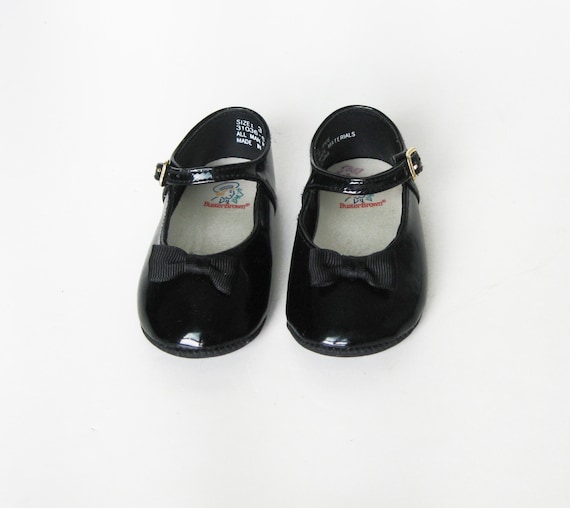

Peer into the mechanism and pull out anything you see. Anything oversize or slightly sticky runs the risk of gumming up the works. Clean the filters often, like at least every other use,” said Tom Gasko, vacuum cleaner collector and repair specialist and owner of Mid Missouri Vacuum. “Remember that the motor is trying to draw air to breathe through the filter. In all of our picks, the filters (PDF) are washable (PDF).
#BUSTER BROWN BABY SHOES MANUAL#
Check your vacuum’s owner manual for specific instructions on cleaning the filter, and do this task as often as the manual recommends (PDF). If the bin gets grimy, pop out and wash the whole bowl and then let it dry fully. Hold the bin over a trash can and tap it until it’s empty. An overstuffed bin blocks airflow, and that causes the suction to suffer. Sarcastic Devotee: Tige, who will often make snarky asides about the trouble Buster will inevitably get into.
#BUSTER BROWN BABY SHOES FOR FREE#
Recycled IN SPACE!: In keeping with the Space Age craze during the 1950s, at least two adventures putting Buster and Tige in a space flight were published and given away for free as premiums in shoe stores- Buster Brown Goes to Mars and Buster Brown in "Out of This World!".Named After Somebody Famous: The name Buster came from the popularity of Buster Keaton, then a child actor in vaudeville.

Long-Haired Pretty Boy: Buster, with his pageboy hairstyle.The Edwardian Era: The comic strip was contemporary to this time period.He is then given money by sympathetic passers-by. When the lessons don't help, Buster gets the idea to perform in the street, pretending to be blind. Dreadful Musician: Buster plays the violin in one strip, so terribly that his mother hires a teacher to try to get him to play properly.Don't Make Me Take My Belt Off!: Buster is subjected to this multiple times by his mother thanks to good old-fashioned Values Dissonance.Dog Stereotype: Tige is a child-friendly and loyal pit bull.When they are discovered by their mothers, they each receive a spanking. Disguised in Drag: In one strip, Buster switches outfits with a girl named Florence and cuts her hair in his pageboy style.Broken Glass Penalty: Buster breaks a window with his slingshot.In the 1980s the Brown Shoe Company updated their logo to keep up with the times, with Buster and Tige bearing a more contemporary outfit. The issue "Buster Brown Goes To Mars" has Buster drawn in an even more stylized manner, his proportions leaning more towards a toddler than an eight-to-ten year old. By the late 1950s, promotional comic books featuring Buster and Tige's adventures has the two drawn in a more streamlined style typical of the era, and Buster no longer wears bar shoes (which were later named after his sweetheart). Art Evolution: Earlier renditions of Buster and Tige bore a more or less realistic aesthetic.Besides having become known more as a children's shoe mascot, Buster himself would also lend his name to an outfit worn by young boys during the early 20th century.

Mary Jane, Buster's sweetheart, wore the style of shoes that would eventually bear her name.

Often he will warn Buster in vain about the trouble he is about to get into. Many strips end with Buster delivering a self-justifying moral which has little or nothing to do with his crime.Īccompanying Buster in his adventures is his dog, Tige, who is thought to be the first talking pet to appear in American comics. The trick or transgression is discovered and he is punished, usually by being spanked by his mother, but it is unclear if he ever repents. Essentially an Edwardian era Dennis the Menace, he is a practical joker who might dress in a girl's outfit and have her wear his clothes, break a window with his slingshot, or play a prank on a neighbor. The latter lasted until 1911 or so, and Outcault's version until at least 1921.Ī city-dwelling boy with wealthy parents, Buster's actions belie his pretty looks. Outcault left for William Randolph Hearst's employ in 1906, and after a court battle, Outcault continued his strip, now nameless, in Hearst papers, while the Herald continued their own version of Buster Brown with other artists. The comic strip began in the New York Herald on May 4, 1902. Buster Brown and his dog, Tige.Though today the name is synonymous with shoes (as a 1904 licensing deal resulted in his becoming the mascot of the Brown Shoe Company), Buster Brown was originally a comic strip character created in 1902 by Richard F.


 0 kommentar(er)
0 kommentar(er)
